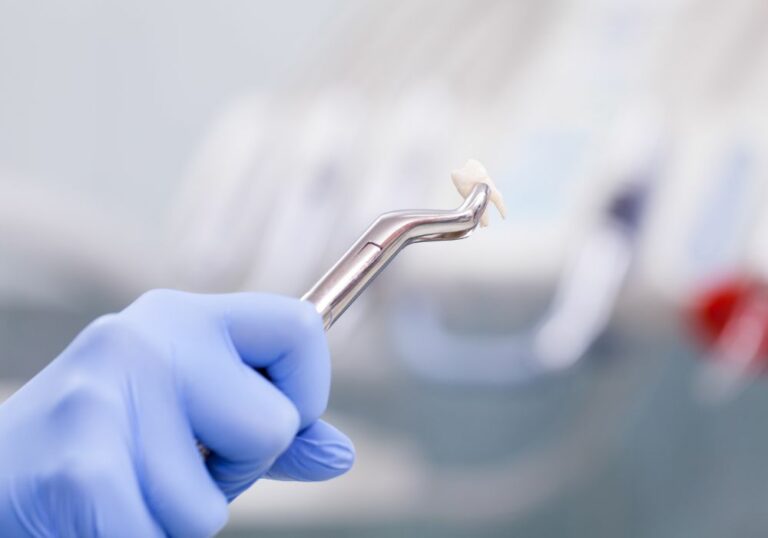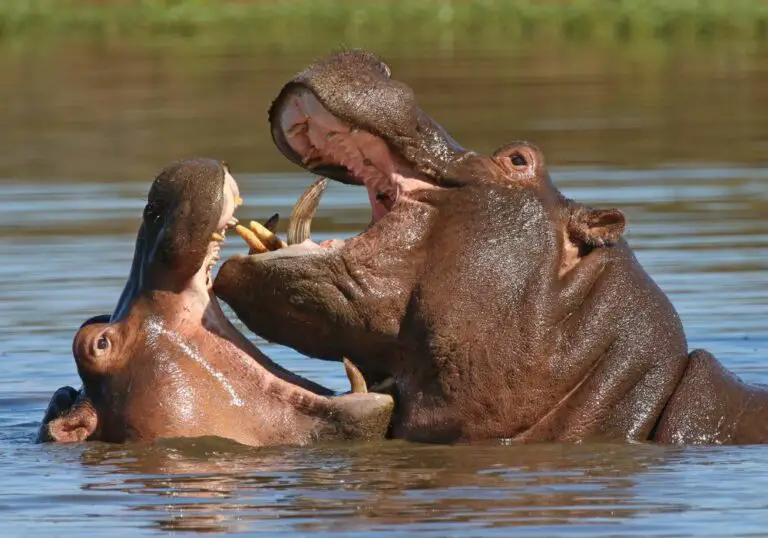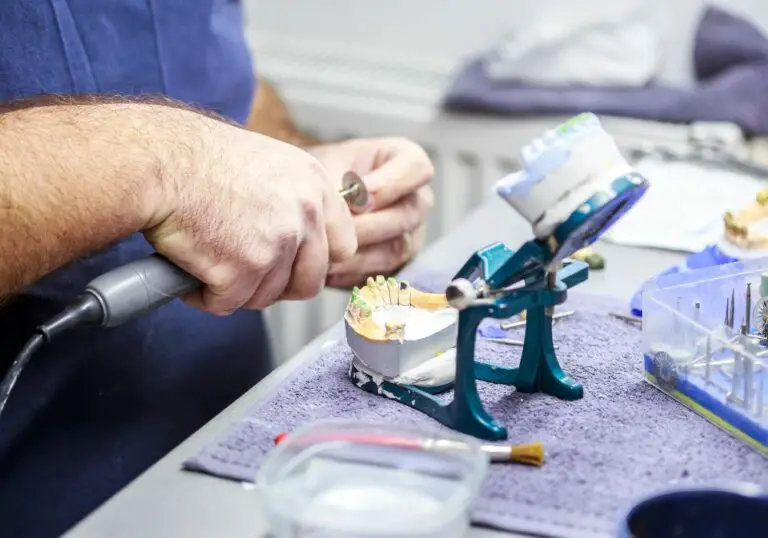Having teeth fall out is quite common for cats, and many felines adapt to living without certain teeth. However, lost teeth can also cause health issues if underlying problems aren’t addressed. Here’s an in-depth look at how missing teeth affect cats and what you can do to care for your cat’s dental health.
What causes cats to lose teeth?
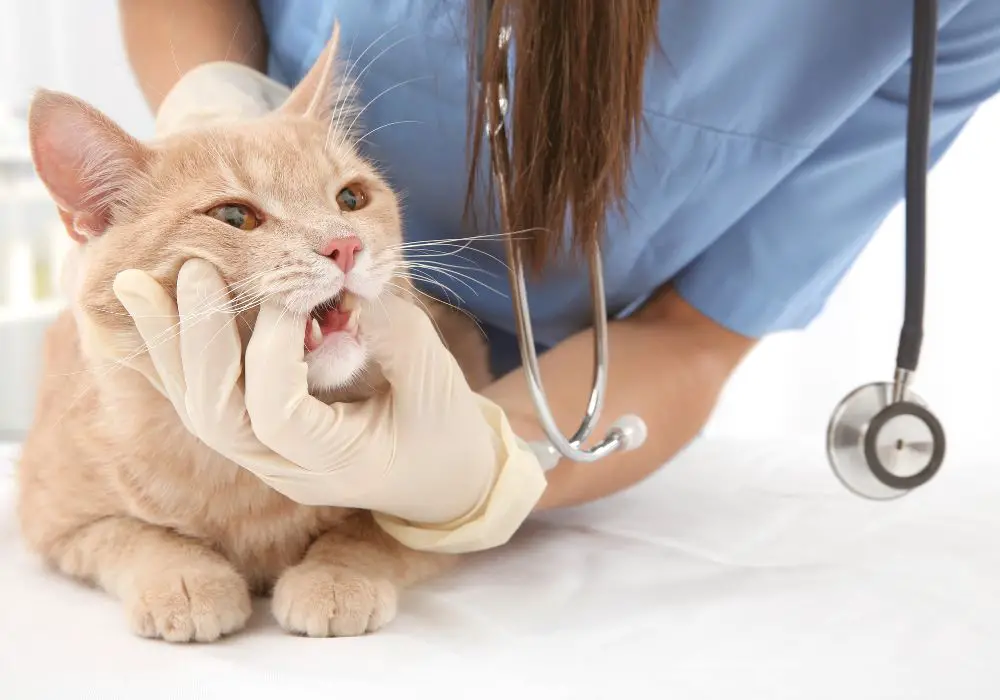
Cats can lose teeth for a variety of reasons. Some common causes include:
Periodontal disease
Periodontal disease, an infection and inflammation of tissues surrounding the tooth, is the main reason cats lose teeth. Usually starting as gingivitis, it’s exacerbated by plaque and tartar buildup on the teeth and gums. Bacteria in this biofilm eat away at the gums, ligaments, and bone supporting the tooth. In the later stages, severe gum recession occurs along with abscesses, bone loss, and eventual tooth loss if not treated.
Tooth resorption
Tooth resorption, which occurs when the body perceives part of the tooth as foreign and dissolves the root, is another common cause of tooth loss in cats. It appears to be an autoimmune reaction. It often affects multiple teeth and can develop rapidly. The tooth weakens from the dissolving root and eventually falls out once insufficient support remains.
Injury
Trauma to the mouth from falls, bites, car accidents, sports, or other injuries can knock out, fracture, or damage teeth. This can lead to immediate tooth loss or eventual extraction if infection develops under the gums due to pulp exposure.
Odontogenic cysts
Cystic lesions rarely develop on tooth roots in cats. These expand over time, destroying and replacing nearby bone and tissue. This can lead to tooth loss, most commonly of the incisors. Surgical removal of the cysts is required.
Congenital disorders
Some cats are born without certain teeth due to congenital conditions like cleft palate. The abnormal development prevents some teeth from forming properly.
Stomatitis
Chronic stomatitis, severe inflammation of the mouth lining, can also cause tooth loss. Severely affected teeth may need extraction to resolve the inflammatory response.
Extractions
Damaged, infected, or painful teeth are often extracted by a vet to prevent further problems. Extraction may be recommended after injuries, for supernumerary teeth, or due to tumors in the mouth.
How does losing teeth affect cats?
Missing teeth can lead to a number of health issues and may impact quality of life. Potential effects include:
- Chewing problems – Loss of premolars and molars affects chewing ability. Cats often flatten their food with their tongue instead of grinding it. Missing canines and incisors makes picking up food more difficult.
- Tooth alignment issues – With no opposing tooth for stimulation, the corresponding tooth in the opposite jaw may elongate or move out of place. Misaligned teeth can also make eating uncomfortable.
- TMJ damage – Missing molars alter chewing forces on the temporomandibular joints. This can lead to arthritis and joint damage over time.
- Bone loss in the jaw – Lack of chewing forces causes the bone to weaken and atrophy. This can change facial features.
- Tooth decay – Gaps allow food to pack in tighter, increasing plaque buildup and decay in neighboring teeth.
- Infection – Bacteria enters empty tooth sockets, causing painful abscesses and infection spread.
- Weight loss – Oral pain and difficulty chewing and swallowing may lead to reduced appetite and inadequate calorie intake.
- Behavior changes – Your cat may act irritable or withdrawn due to discomfort. Litter box issues may occur if painful to chew litter.
- Reduced grooming – Oral pain can make grooming difficult and painful. This leads to matted and unclean fur.
- Decreased quality of life – If malnutrition, dehydration, or infection develops, the cat’s wellbeing deteriorates rapidly.
While a few lost teeth may not cause issues, extensive loss of teeth without treatment significantly impacts health. Proper dental care can help prevent this.
Are cats able to adapt to missing teeth?
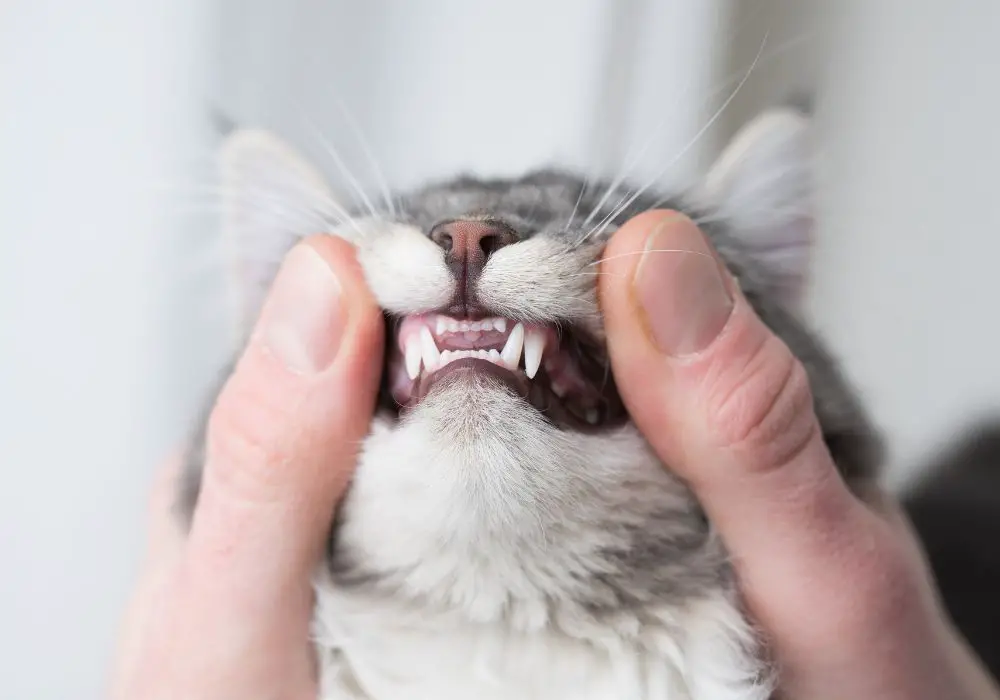
Cats are often resilient and able to compensate surprisingly well when a few teeth are lost. Here are some of the ways they can adapt:
- Cats naturally swallow larger pieces of food without much chewing, reducing their need for back teeth. Their bite compresses food into manageable chunks.
- Their rough tongue helps grip food, so they use it to manipulate food more than their teeth. The tongue’s papillae aid in rasping meat off bones too.
- Cats without molars learn to slide food between their canine teeth to shear it instead of grinding. They may chew in an exaggerated motion to compensate.
- Eating becomes more of a two-step process – first biting off pieces of food, then chewing and crushing it inside the mouth.
- Cats may prefer one side of their mouth if missing teeth on one side. You may notice them tilting their head as they eat.
- They often develop preferences for different food textures that are easier to manage with their dental condition.
- Medications can help control oral pain and inflammation, making eating more comfortable until healed.
So while chewing and eating takes more work, most cats with a few lost teeth can adapt fairly well. But the extent of adaptation depends on your cat’s age, health status, how many teeth are involved, and the underlying disease. Severe dental issues require veterinary attention.
When should tooth extraction be considered?
Cats may require extraction when:
- Advanced periodontal disease destroys support structures
- An abscessed or infected tooth can’t be salvaged
- A tooth is completely mobile with severe resorption
- A tooth root remains with no visible crown
- A tooth is damaging soft tissues like the cheek or tongue
- A severely fractured or otherwise injured tooth
- Supernumerary (extra) teeth are present and problematic
- Tooth removal is needed for treatment of stomatitis
- Odontogenic cysts destroy bone supporting teeth
- Severe dental crowding is present
Ideally, extractions should only be done when the tooth cannot be saved through other methods like root canals, antibiotic therapy, or restorative work. But extraction is sometimes the most appropriate option to relieve pain and save the cat’s life.
The risks and benefits must be weighed carefully for each tooth. Your veterinarian will examine your cat’s mouth thoroughly and recommend appropriate treatment.
What are the potential complications with extractions?
While a routine procedure, any surgery carries some risks, including:
- Excessive bleeding if the socket doesn’t clot properly after extraction.
- Infection getting into the open socket, requiring antibiotic treatment. Signs include oral discharge and swelling.
- Jaw fracture if excessive force is used during a difficult extraction. This may require surgery to stabilize the fracture.
- Nerve damage from accidental tearing of branches during extraction. This usually causes only temporary numbness.
- Leaving tooth root fragments behind if attempting to completely remove them would harm adjacent structures. Fragments may later need surgical removal if causing problems.
- Creating an opening into the nasal sinuses if upper premolars/molars are removed without proper surgical methods.
- Cracked or luxated adjacent teeth due to grasping tools slipping during extraction.
With proper training and technique, a veterinary dentist can minimize risks and avoid most potential complications. Thorough treatment planning helps ensure the best outcome for your cat.
How do vets evaluate dental health and disease in cats?
Veterinarians have a number of methods to examine a cat’s mouth and identify any dental issues:
- Oral exam – The mouth is visually inspected, and each tooth evaluated for abnormalities. Dental instruments help detect loose teeth, calculus, gaps, or other problems.
- Periodontal probing – A thin probe is inserted into the space between the tooth and gum to measure pocket depth as an indicator of periodontal disease.
- Radiographs – Dental x-rays allow examination below the gums to check for infection, retained roots, or bone loss.
- Dental charting – The vet records a grade for each tooth during the exam. Comparison over time shows disease progression.
- Anesthetized oral exam – A more thorough exam, including tartar scoring, can be done with the cat under anesthesia.
- Biopsy – Abnormal tissue may be biopsied and sent for pathology if cancer is suspected.
- CT scan – Advanced 3D imaging of the jaw provides detailed views of a tooth’s anatomy and surrounding structures.
- Bloodwork – Culture and sensitivity testing can identify bacteria involved in infection to select appropriate antibiotics.
Early diagnosis through regular professional dental cleanings provides the best chance of reversing disease and saving teeth before extraction is required. But once a tooth requires removal, proper extraction techniques and follow-up care are crucial for your cat’s wellbeing.
What is the typical prognosis for cats with missing teeth?
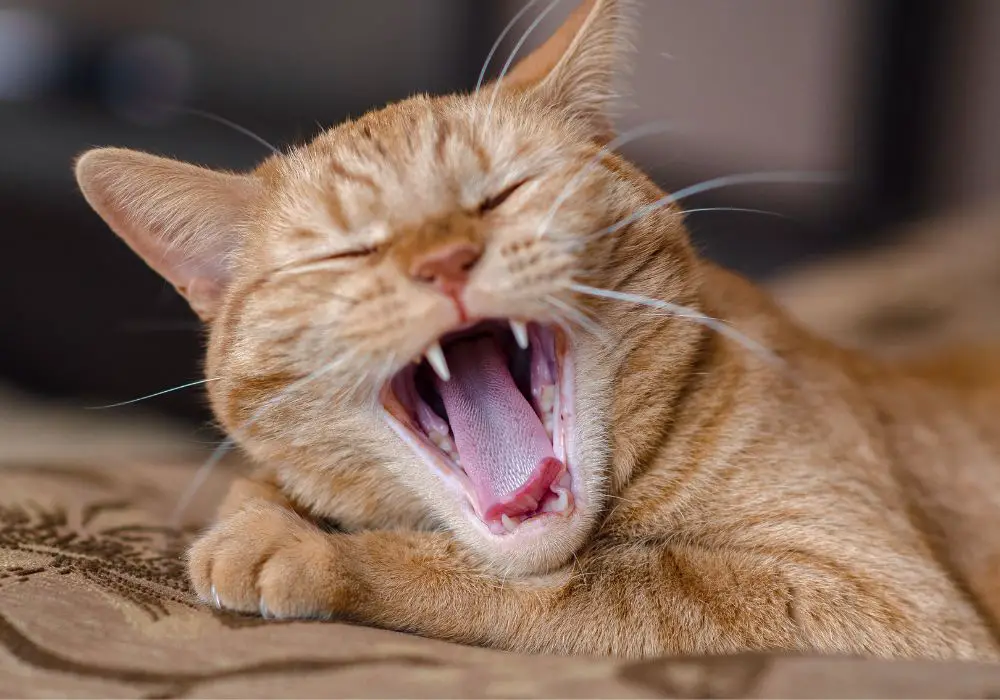
The prognosis for cats who have lost one or more teeth is generally positive. With attentive home care and follow-up treatment, most cats can adapt and enjoy years of normal functioning. However, regular dental care is important for the remaining teeth.
Factors impacting prognosis include:
- Number of extractions – Fewer extractions have better outcomes. As more teeth are removed, eating becomes more difficult.
- Underlying disease – The prognosis is worse if dental disease is left untreated and allowed to progress. Ongoing issues like stomatitis also affect prognosis.
- Tooth alignment – Teeth remaining properly aligned have greater longevity versus tipped or elongated teeth.
- Overall health – Younger, healthy cats handle tooth loss better than senior cats with other medical conditions.
- Aftercare – Following veterinary recommendations for medications, diet, and follow-up visits greatly improves prognosis.
- Home care – Providing soft food, maintaining caloric intake, monitoring weight, and keeping the mouth clean prevents complications.
With vigilant home dental care and professional cleanings, cats missing several teeth can still live many healthy years. But regular veterinary oral exams are key to ensure problems don’t develop.
What homecare do cats with lost teeth require?
Caring for your cat’s teeth at home is important after dental surgery and tooth extraction. Recommended homecare includes:
- Soft food diet – Canned food or kibble soaked in water makes eating easier. You can also use a blender to create a mushy texture.
- Elevated dishes – Raise food and water bowls a few inches to reduce strain on the neck when eating.
- Frequent small meals – Feed smaller portions more often to prevent gorging. Divide daily calories into 4-6 meals.
- Rinsing after meals – Gently wipe or rinse the cat’s mouth to remove debris from empty tooth sockets vulnerable to infection.
- Medications – Give all post-op antibiotics or other medications as directed by your veterinarian.
- Pain control – Ensure the cat completes any prescribed pain medication regimen.
- Gentle brushing – Regularly brush remaining teeth and massage gums to prevent plaque buildup. Avoid sore areas.
- Prevent injuries – Use ceramic, stainless steel or plastic dishes to prevent mouth injuries. Remove small toys that could be chewed and swallowed. Monitor for signs of pain.
- Follow up exams – Take your cat for rechecks with the vet to ensure proper healing. Schedule regular cleanings for the remaining teeth.
While missing teeth take adjustment, proper home care and working closely with your vet gives your cat the best chance of adapting well to life without certain teeth. Be alert for any signs of discomfort, appetite issues or difficulty eating.
Frequently Asked Questions
How can I tell if my cat has a painful tooth?
Signs of dental pain in cats include decreased appetite, dropping food from the mouth, chewing on just one side, excessive drooling, pawing at the face, red or inflamed gums, facial swelling, irritable behavior, and bad breath. If your cat exhibits any of these symptoms, contact your vet for an oral exam.
Do cat’s teeth grow back after extraction?
No, cat’s teeth do not grow back once removed, just like permanent human teeth. The empty socket will gradually fill in with scar tissue over time. So it’s important to take measures to prevent disease requiring extraction through regular dental care.
Is full mouth extraction ever advisable for cats?
Full mouth tooth extraction is generally only performed in extreme cases where severe dental disease affects nearly all teeth, making saving any very unlikely. The benefits must be weighed against risks of long-term complications. Your vet can advise if full mouth extraction is ever warranted based on your cat’s unique condition.
Can dental issues lead to additional health problems?
Absolutely. Bacteria from severe dental infections can enter the bloodstream and damage organs like the heart, kidneys and liver. Missing teeth can contribute to malnutrition and weight loss. Exposed tooth roots and empty sockets allow infection to spread. Overall, poor dental health negatively impacts overall health.
What is the typical cost to extract a cat’s tooth?
Costs vary based on the number and type of extractions, medications required, anesthesia fees, and your location. Simple single extractions may range from $200 to $500. Extracting multiple teeth or full mouth extraction can cost $800 to $3000. Get an estimate from your veterinarian before any work. Saving up beforehand helps budget for needed treatment.

